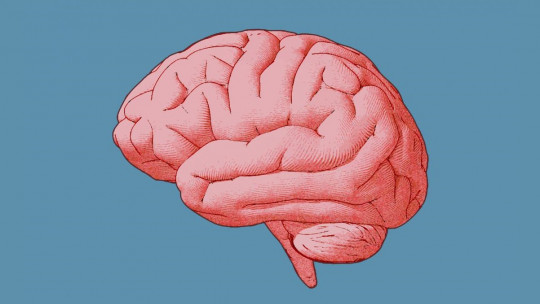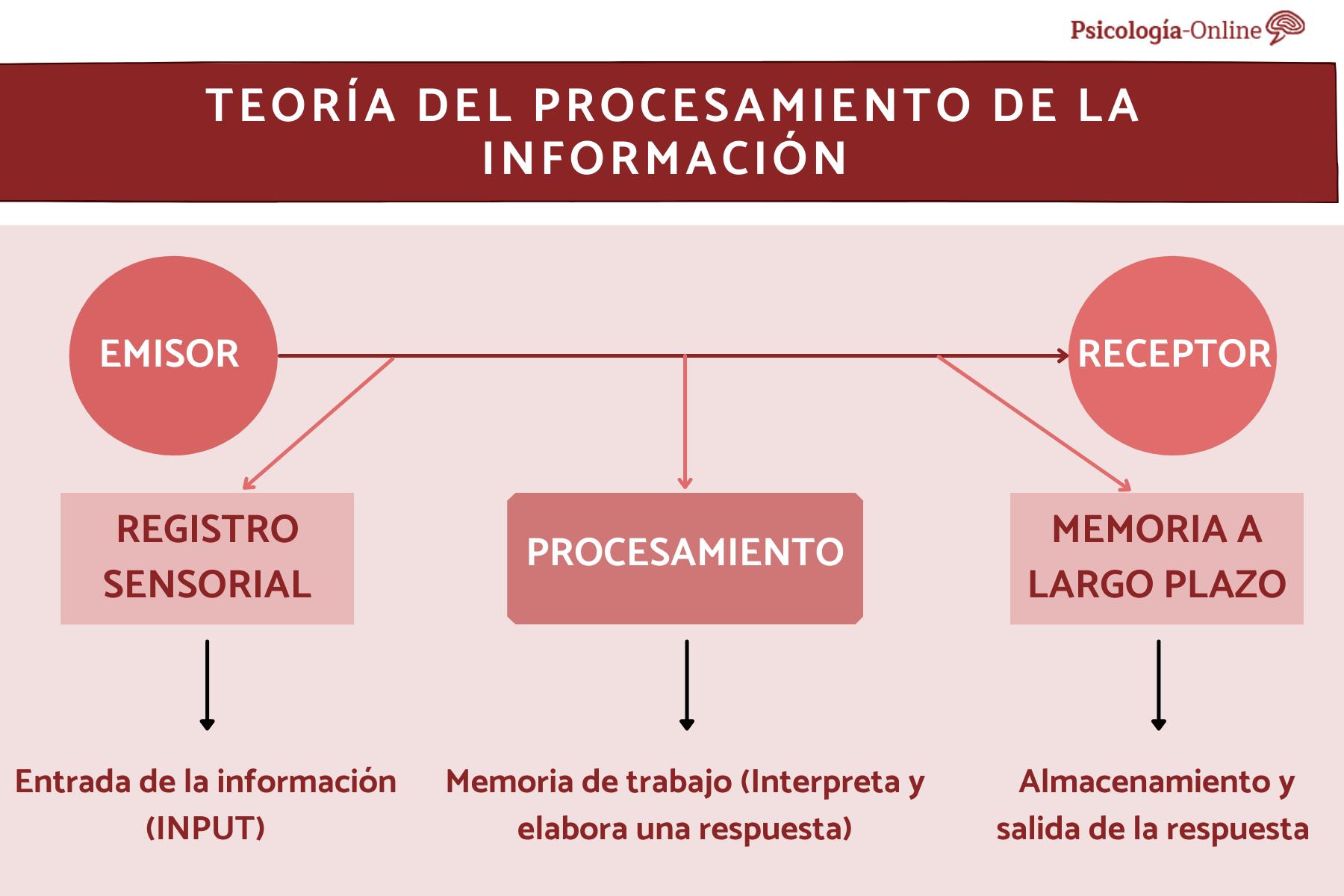Throughout history, various models have appeared to explain human behavior and the way in which man relates to his environment (behavioral, cognitive, constructivist, dynamic, etc.), but they are all open to criticism and objections. Other authors, all of them offer partial explanations and may be valid to explain only specific aspects of behavior, but not in a global way. One might then ask: is there any model that by itself can encompass the entirety of complex human behavior and is capable of explaining it at a level of effectiveness that allows a high degree of unanimity among its scholars?
In this PsychologyOnline article, we will talk about Interactional systemic approach and the functional model of the mind
Conceptual framework
If we observe the phenomena of our environment, there can be little discussion about the fact that when we throw a stone into the air it will fall to the ground due to gravity, or if we put our hand in hot water we will burn ourselves due to the exchange of heat, since both events They are governed by the laws of nature, which are imperative and do not vary by place and time. Therefore, if we adopted the laws of Nature known and explained by Science (Physics, Chemistry and Biology) and the strategies used by it (adaptation, diversity, selection, cooperation, competition, useful work, etc.) as reference system so that the explanatory models of behavior created by man were based on them, it would allow us to perceive and understand human behavior as it is, without cultural, ideological, political or religious connotations that distort reality for their own benefit and constitute the germ of the psychological disturbances that arise in our daily lives.
One of these models is the Interactional Systemic Approach, that arises under the protection of Newton’s words: “The pages of Nature are open to he who has sufficient intelligence to read them”, and that uses the Functional Model of the Mind as a basic tool to explain human behavior.
The systemic interactional approach
The fundamental piece of the interactional systemic approach is that it considers the human being as a biological system complex closely linked to the environment forming the human-environment supersystem (SH-E) with which it exchanges matter, energy and information. In this supersystem, countless interactions take place between its different components (people, other living beings, objects, ecosystems, etc.). Likewise, in the context of the human biological system, there are also numerous interactions between the multiple subsystems that compose it (nervous, endocrine, immune, etc.).
Both types of interactions maintain close and complementary relationships, so that the person’s behavior can be explained through the analysis of such relationships. As a result of such interactions, events occur or situations are created that influence in some way the person and the environment in which he or she operates (in the family, at work, etc.), and when the result of the interaction is harmful (harmful, unpleasant, dangerous, threatening, etc.) or is not desired by the person, increases the probability of a psychological imbalance and, consequently, disappointment, frustration and helplessness, which are the triggers. of psychological disturbances. The presence of this risk shows the need to know how these relationships are generated and develop in order to prevent them from causing events or situations that disturb the stability and psychophysical balance of the human biological system.
Interactions in the SH-E supersystem are regulated by instructions that are grouped and ordered in different specific action programs for each type of interaction: physical laws, social norms, customs, fashions, etc. in SH-E interactions, and mental action programs in the human brain system.
In the daily life of people within the SH-E supersystem, the exchange of matter (goods and services), energy (food) and information (knowledge) are the basic elements that sustain interactions, but, although all of them act together and complement each other, this approach focuses solely on the exchange of information, that is, in the analysis of the information that emerges from the facts and situations generated by the person-person and person-environment interactions (several may occur: one main and other secondary) and that, when processed through the different Brain structures (through the corresponding mental programs) can become classified as “harmful” and generate psychological disturbances that negatively affect the person in their daily life.
The characteristics to highlight of this approach in its relationship with psychological disturbances are:
- In an interaction, it is necessary to distinguish between the fact or situation that occurs as a result of it (reality) and the mental representation of it that is generated in the person when interpreting it and creating a meaning and evaluation of it, since the alteration psychological emerges from this mental representation, not from the fact itself; Therefore, it can be said that the disturbing stimulus has a psychological (subjective) and not a physical (objective) nature, and it is this subjectivity that justifies that the same stimulus causes disturbance to one person and does not do so to another.
- This approach focuses fundamentally on those relationships, elements and circumstances of interactions that are related to psychological disturbance generated by it. It studies the particular factors and characteristics of the person and their environment that intervene in it, leaving aside those that do not influence the interaction.
- Interactions create bonds cognitive and emotional nature with the rest of the components of the environment, and the fear of losing them if they are beneficial or the uncontrolled desire to obtain them if they are not available, constitutes one of the most important sources of disruption of daily existence.
Following this approach, the SI approach is based on the Functional Model of the Mind and in the various mental programs that direct the processing of information in the brain system to perform its analytical function of psychological disturbances and propose action measures to confront them. The programs contain the necessary instructions to carry out this processing (each mental function has a specific program) and their importance lies in the fact that part of the psychological imbalances are due to either organic and/or functional deficiencies of the brain structures or processes that serve as support. to these programs, either due to errors or anomalies in them: poor perception and attention, interpretation errors, failures in learning and memory, etc.
Application of the functional model of the mind
The functioning of any living system depends on two factors: the organic structure and composition and the operating instructions or “program” of action. Within the human biological system, brain functions also depend on these elements, therefore, deficiencies in its functioning can be due to two main causes:
- Damage to brain organs, structures and processes due to genetic deficiencies, trauma, infections, toxic agents, diseases, etc. (schizophrenia, ADHD, Alzheimer’s, major depression, bipolar disorder, etc.).
- Anomalies and deficiencies in the brain’s information processing systems, fundamentally in the mental action programs that contain the operating instructions of these systems.
The application of the MFM basically focuses on alterations in psychological balance that have their origin in deficiencies or anomalies in the processing of information by the cognitive and emotional systems of the brain, without there necessarily being (although there may be) organic or structural damage and the underlying biological processes acting correctly. Although it relies heavily on these processes, it should be highlighted that the main object is the mental phenomena that emerge as a result of such processes from the processing of information in well-defined brain structures: thought, emotion, memory, consciousness, introspection, etc.
The schematic representation of the phases of processing the information contained in a stimulus according to the MFM is:
PERCEPTION => INTERPRETATION => CHOICE => VOLITIVE IMPULSE
The use of this model pursues two objectives:
- Find out why certain information from an external stimulus (the fact or situation that results from the interaction) is transformed, when processed through these mental programs, into an internal stimulus (a thought, an idea, a desire, a emotion, etc.) capable of generating a ‘psychological disturbance. The internal stimuli generated through these mental programs by themselves are also included, without external stimuli intervening and using only information stored in memory (memories of events).
- Define the strategy to follow to choose the appropriate information to replace the one that has generated the disturbance and the way to introduce it into the brain processing system (through an idea, an event, a behavior, a symbol, etc.), to try to modify the instructions of the mental program linked to the disturbance and recover psychological balance.
Given that the interactions take place between two elements: the person and the environment, the model analyzes the information coming from both components, taking into account as basic axes the psychological characteristics of the person involved in the disturbance (personality traits, cognitive distortions , emotional biases, patterns of interpretation and behavior, etc.) and the spatio-temporal-cultural context in which the interaction takes place (the latter includes the social, normative, moral, etc.).
Following this model, psychological disturbance can be caused by:
Anomalies or deficiencies in mental programs
difficulty perceiving and/or interpreting information or doing so correctly (the person has difficulty understanding reality); inability to choose a response to the stimulus (due to “mental block”, or not finding an acceptable response, or not deciding to choose among those available); choosing inappropriate responses that encourage inappropriate actions due to the characteristics of the stimulus and the context in which it occurs. If the anomaly gives rise to a situation that the person qualifies as harmful and relevant to their existence, it will cause the appearance of psychological disturbance.
Autonomous activation of the emotional system
It may happen that the processing of the information is correct, but due to the characteristics of the stimulus (situation of grief, loss of something valuable, interpersonal conflict, etc.) the person suffers an alteration of the emotional state and perceives unpleasant and annoying bodily sensations. that accompany it, also affecting the cognitive system: lack of concentration, mental confusion, difficulty reasoning, etc. Likewise, it can also be activated involuntarily when the memory of a disturbing event from the past arises in the mind, or when a thought appears about some harmful event that could occur in the future.
Specific inappropriate behaviors
Without “anomalies” occurring in cognitive and/or emotional functions. The person is usually aware that their behavior is not appropriate (addictions, rituals, manias or inappropriate habits, uncontrolled impulses, etc.) but is not able to control it, since the behavior is reinforced by obtaining a pleasant sensation from it (pleasure). , relief, calm, etc.), although you know that in the medium or long term it can bring you harm and suffering.
One of the key elements of the MFM are the mental programs that make information processing possible and are grouped into:
- perception programs (attention and mental construction of perceived reality).
- interpretation and response choice programs.
- programs to encourage action (their main element is motivation)
The perception program The mission of the of what is being perceived and the position of the person in front of it. The basic processes of this program are attention, that selects the elements of the environment to perceive, and the comparison, that relates them to the information stored in memory to obtain a representation of it (it is necessary to recognize and “understand” the stimulus).
The interpretation and response choice program (the SOM) is responsible, on the one hand, for interpreting the stimulus to give it meaning and predicting its possible consequences, and on the other, choosing a response to this stimulus. Its operation is:
a) “If this is perceived, it means such a thing, and it brings these consequences”
b) “In that case, I must act this way”
The first part refers to the perception and interpretation of the stimulus, so that, based on what the person perceives (and which, sometimes, may not correspond to the authentic objective reality) the program generates an interpretation of the event and assigns a meaning (which by nature is neutral) which it qualifies as harmful (harmful, threatening, dangerous, etc.) by attributing foreseeable negative consequences, giving rise to emotional disturbance and causing the activation of the physiological alarm system with its symptoms. annoying and unpleasant physical characteristics. The second part refers to the choice of the response to the disturbing stimulus, since, even when the interpretation and its consequences turn out to be correct, the chosen response may not be correct and may give an unexpected result that leads to frustration or a worsening of the situation. If the disturbing event is repeated regularly, it can generate a pattern of interpretation and behavior that is equally repeated.
In this program the most relevant process is logical reasoning (understanding this as the processing of information in a coherent way, that is, making an inference of a conclusion from a set of premises) that interprets the stimulus, generating a meaning and attributing consequences to it and, by virtue of these, chooses a determined response and gives impetus to the behavioral phase that puts it into practice voluntarily and premeditated. However, there are behavioral responses in which the cognitive phase is very limited.
The impulse to action program prepares the person for the execution of the chosen action. Its mission is to create the disposition and mental strength sufficient to overcome laziness, weakness, reluctance, etc. The basic processes of this phase are referred to the attitude, will and motivation<
One of the most relevant aspects of mental programs is the mental phenomenon of the conviction, that is, the unquestionable acceptance that the person’s perception, interpretation and evaluation of the stimulus coincides with reality. Likewise, that the behavior carried out by the person is correct, justified and proportional to the circumstances.
The phenomenon of conviction It is an emergent property of the mind that arises when the level of correspondence and affinity of the information being processed with respect to that stored in memory (knowledge, emotions, experiences, objectives and motivation) reaches a certain threshold of coherence, arising spontaneously. the conviction that the conclusion reached in the processing of information is the correct one.
The more arguments we find in favor of one interpretation/valuation and against the antagonistic one, the more easily we will be convinced.
Conclusions
Based on the above, it can be concluded that the analysis of psychological disturbances based on the MFM focuses on the study of the interactions between the various subsystems that make up the human biological system (basically those that handle information: nervous, endocrine and immune). and those of this with the environment, as determining factors of the alteration of the psychological balance that clouds the daily existence of people. Such interactions follow the instructions contained in the mental programs of each person, so that the focus of attention is those deficiencies and functional anomalies that have their origin in one of the mental programs responsible for capturing and processing information that affect the basic axis of human behavior: thought-emotion-action, and that generate:
- Disturbances of cognitive functions: perception errors; inappropriate, illogical or irrational reasoning; inappropriate decisions; obsessive thoughts; memory disturbances; lack of concentration; forgetfulness; distractions; intrusive negative thoughts; etc
- Disturbances of emotional balance caused by situations classified by the person as “harmful” and that generate afflictive emotional states (sadness, frustration, helplessness, insecurity, hopelessness, etc.) or exalted and harsh emotional states (fear, anger, resentment, hatred, etc.) that are accompanied of unpleasant and bothersome physical symptoms.
- Non-adaptive behaviors: inappropriate habits; tics and behavioral “rites”; obsessive-compulsive traits; addictions; high risk stocks; excessive food intake; impulsive and/or aggressive behaviors; abuse of toxic substances, etc.
This article is merely informative, at PsychologyFor we do not have the power to make a diagnosis or recommend a treatment. We invite you to go to a psychologist to treat your particular case.
If you want to read more articles similar to Interactional systemic approach and following the functional model of the mind we recommend that you enter our Cognitive Psychology category.








